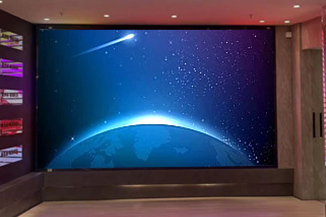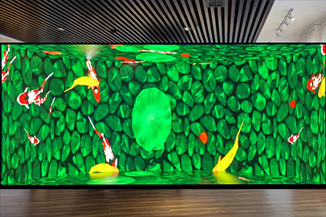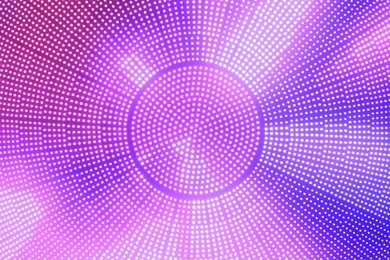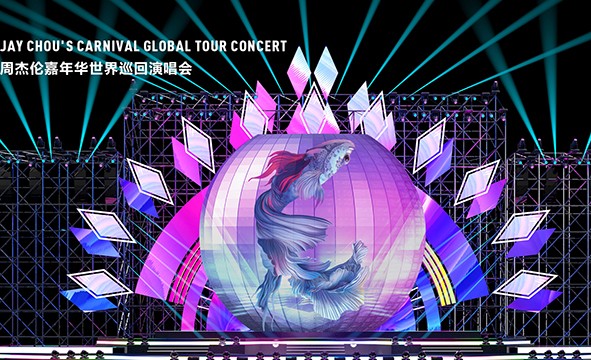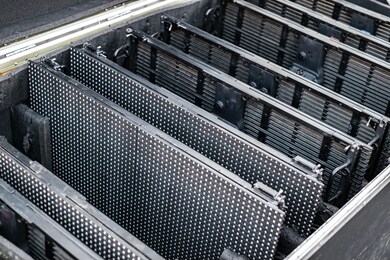Publisher: Supplier of LED Display Time: 2022-11-30 15:09 Views: 1635
As the application of LEDs becomes wider and wider, the types become more abundant. Do you know the types of LEDs and LED packages? The general classification method of LED is introduced below. Next, Liancheng will take you to take a look!
Common Classifications of LEDs
1. Classified by luminous color
According to the light-emitting color of the light-emitting tube, it can be divided into red, orange, green (subdivided into yellow-green, standard green and pure green), blue light, etc. In addition, some light-emitting diodes contain chips of two or three colors.
According to whether the light-emitting diode is mixed with or not mixed with a scattering agent, colored or colorless, the above-mentioned light-emitting diodes of various colors can also be used
2. Planar package (Flat LED)
A planar packaged LED device is a structural device composed of multiple LED chips. Through the appropriate (including series and parallel) and appropriate optical structure of LEDs, the luminous segment and luminous point of the luminous display can be formed, and then various luminous displays can be formed from this luminous segment and luminous point, such as digital tubes, "meter" tubes , matrix tube, etc.
1) LED digital tube (LED Segment Display)
It is composed of LED8", plus the decimal point is 8. This segment is represented by the letters bcd, ef, g, dp respectively. When the voltage is applied to the specific segments of the digital tube, these specific segments will light up to form The words we see with our eyes. Figure 1-13 lists LED digital tubes of different sizes.
LED digital tubes are divided into general bright and super bright, and also have different sizes such as 05 inches and 1 inch. The display strokes of small-sized digital tubes are usually composed of one light-emitting diode, while large-sized digital tubes are composed of two or more light-emitting diodes. Under normal circumstances, the tube voltage drop of a single light-emitting diode is about 18V, and the current does not exceed 30mA.
LED digital tubes use light-emitting diodes as the light-emitting unit, and the colors can be made into many types like Lamp LEDs, with single red, yellow, blue, green, white, and colorful effects. Mainly used for building walls, advertising signs, etc. It is especially suitable for large-scale dynamic light strips such as billboard backgrounds, overpasses, river and lake guardrails, and building outlines, which can produce rainbow-like effects.
2) LED dot matrix (LED Dot Matrix)
The package is similar to the digital tube, which is used for information display. Common LED dot matrix modules are shown in Figure 1-14. The number of LED dot matrix has different types such as 5x7, 8x8, 16x16; the diameter of the hole has different types such as ф2.0, @3.0, @3.75, ф5.0, etc.; the colors include single color, double color, and three primary colors.
The advantages of LED dot matrix are high brightness, low operating voltage, low power consumption, miniaturization, long life, impact resistance and stable performance, so it has been widely valued and developed rapidly.
LED digital tubes are divided into general bright and super bright, and also have different sizes such as 0.5 inch and 1 inch. The display strokes of small-sized digital tubes are usually composed of one light-emitting diode, while large-sized digital tubes are composed of two or more light-emitting diodes. Under normal circumstances, the tube voltage drop of a single light-emitting diode is about 1.8V, and the current does not exceed 30mA.
LED digital tubes use light-emitting diodes as the light-emitting unit, and the colors can be made into many types like Lamp LEDs, with single red, yellow, blue, green, white, and colorful effects. Mainly used for building walls, advertising signs, etc. It is especially suitable for large-scale dynamic light strips such as billboard backgrounds, overpasses, river and lake guardrails, and building outlines, which can produce rainbow-like effects.
3) LED dot matrix (LED Dot Matrix)
The package is similar to the digital tube, which is used for information display. Common LED dot matrix modules are shown in Figure 1-14. The number of dots of the LED dot matrix is 5x7, 8x8, 16x16 and other types; the diameter of the holes is $2.0, $3.0, $3.75, $5.0 and other types; the colors are single-color, double-color, three-color and so on.
The advantages of LED dot matrix are high brightness, low operating voltage, low power consumption, miniaturization, long life, impact resistance and stable performance, so it has been widely valued and developed rapidly.
3. SMD package (SMD LED)
SMD (Surface Mounted Device) LED is the latest development of LED at present. It is suitable for SMT processing and can be reflow soldered on the surface of the circuit board. It solves the problems of brightness, viewing angle, flatness, reliability, and consistency. The lighter PCB and reflective layer materials are used, and the heavy carbon steel pins of the in-line LED are removed after improvement, so that the display reflective layer needs to be filled with less epoxy resin, the purpose is to reduce the size and weight. In this way, the surface mount LED can easily reduce the weight of the product by half, and has the advantages of small size, large scattering angle, good uniformity of light emission, and high reliability. The light emission color includes various colors including white light, so it is widely used in various electronic products. At present, it is mainly used in 3C technology products, such as mobile phone screen backlight, audio backlight, mobile phone button light source, car panel backlight, electrical button signal lights and other applications. The irradiation angle is large, so the beam can spread evenly, but the production cost is extremely high. high. Figure 1-15 shows the SMD-LED diagram.
19SMD-LED is divided into 0603, 0805, 1210, 5060, 1010 and so on according to the shape and size. Generally, SMD is Ling, so its name is based on the size of "length x width". The industry uses inches, not millimeters. For example, 0603 has a length of 0.06 inches and a width of 0.03 inches. It is also expressed in millimeters, such as 5050, which means that the length of the LED component is 5.0mm and the width is 5.0mm.
The luminescent color and the type of colloid are the same as Lamp LED products, but the shape of the product has changed a lot. SMD-LED can be divided into Top-LED and Side-LED according to different applications. even
1) Top-LED (top-emitting LED)
Top-emitting LEDs are the more common SMD LEDs. It is mainly used in the backlight and status indicator lights of multi-functional ultra-thin mobile phones and PDAs.
2) Side-LED (side-emitting LED) so the material,
At present, another focus of SMD-LED packaging is side-emitting packaging. If you want to use LED as the backlight source of LCD (liquid crystal display), then the side light emission of the LED must be the same as the surface light emission, so that the LCD backlight light can be uniform. Although the design of the lead frame can also achieve the purpose of side lighting, the heat dissipation effect is not good. However, Lumik’s T company invented the design of the reflector, using the principle of the reflector to emit side light from the surface-emitting LED, and successfully applied high-power LEDs to large-size LCD backlight modules.
4. Piranha Shaped LED
Piranha LEDs are generally square, packaged in transparent resin, with four pins, and there is a missing pin at the negative pole. The design of the four legs and the space between them make the heat dissipation of the piranha LED much better than that of ordinary LEDs, and the working current that can pass is a little bit, the maximum can reach 40~50mA. Piranha is an astigmatism LED with a light angle greater than 120°, high luminous intensity, and can withstand greater power. The low-power LD mermaid LED is the best, but compared with high-power 1W, 3W and 5W, its brightness is very low. Figure 1-16 shows the Piranha LED. As can be seen from the picture, the reason why this LED is called a piranha is because its shape is very similar to the piranha Piranha in the Amazon River.
Piranha LED is more and more valued by people because it has better heat dissipation than $3mm and $5mm LEDs, has a larger viewing angle, lower attenuation, and a longer lifespan. Therefore, it is widely used in line lights, backlight light boxes, light sources in large font slots, and automotive lighting systems.
5. High-power package (High-power LED)
High-power LED refers to a light-emitting diode with a large rated operating current. It has large power dissipation, high heat generation, high light output efficiency, and long life.
At present, the power of ordinary LEDs is generally 0.05W, and the working current is 20mA, while high-power LEDs can reach 1W, 2W or even tens of watts, and the working current can range from tens of milliamperes to hundreds of milliamperes. Due to the constraints of high-power LEDs in terms of luminous flux, conversion efficiency and cost, it is determined that the short-term application of high-power white LEDs is mainly lighting in some special fields, and the medium and long-term goal is general lighting.
The thermal characteristics of power LEDs directly affect the working temperature, luminous efficiency, luminous wavelength, and service life of LEDs. Therefore, high-power LEDs cannot simply be packaged with traditional low-power LEDs. Equipment and other aspects are reconsidered and new packaging methods are studied.
At present, high-power LEDs mainly have the following six packaging forms: large-size epoxy resin packaging that follows the lead-in LED packaging idea; imitation piranha-style epoxy resin packaging; aluminum substrate (MCPCB) packaging; Idea of TO package; power type SMD package
6. Flip Chip Package (FLIP FLOP LED)
With the development of LED, the stability requirements of light-emitting diode (LED) light sources in different operating environments are more stringent. LEDs using flip-chip (Flip-chip) packaging technology have higher stability than ordinary LED packaging. Reliability has the advantages of shortening the process time of high-temperature baking, high yield, good heat conduction effect, and high light output, so it stands out in the LED market.
Usually, the side on which the circuit structure is formed after a series of processes on the wafer is called the front side of the wafer. The original packaging technology is on the substrate, the front side of the chip is always facing up, and the flip-chip packaging technology reverses the front side of the chip, using bumps between the chip and the substrate and on the periphery of the circuit (see bamboo Rod) connection, that is to say, a space is formed by the wafer, the substrate, and the bump, and the circuit structure is in this space. The chip packaged in this way has the advantages of small size, high performance and short connection.
The technical feature of flip-chip packaging is to shorten the time of LED manufacturing process at high temperature baking, which can reduce the thermal stress of materials: in addition, the heat generated by the chip is conducted to the substrate through gold bumps, so the heat conduction effect is good, and the electrode on the chip is removed to block the light. The area increases the amount of light output; and the manufacturing process is simplified and easy to control.
If semiconductor lighting fixtures want to enter the field of general lighting, the production cost is the first major constraint. To reduce the cost of semiconductor lighting fixtures, we must first consider how to reduce the packaging cost of LEDs. The traditional method of LED lamps: LED light source discrete device → MCPCB light source module → LED lamps, mainly based on the lack of applicable core light source components, is not only time-consuming and costly. In fact, we can combine "LED light source discrete device → MCPCB light source module" into one, directly make the LED chip and MCPCB together into a COB light source module, and use the route of "COB light source module → LED lamp", which can not only save It saves labor and time, and can save the cost of device packaging.
Chip-on-board packaging (COB), covering the chip placement point on the surface of the substrate with thermally conductive epoxy resin (generally epoxy resin doped with silver particles), and then placing the chip directly on the surface of the substrate, heat treatment until the chip is firmly fixed on the substrate ,
Wire bonding is then used to establish a direct electrical connection between the chip and the substrate. With COB packaged LED lamps, traditional LED discrete light source devices are difficult to meet the requirements of performance, cost, application coordination and usage habits in the lighting field. COB light source modules will become the main packaging form of LED light source lighting applications in the future.
7. System in Package (SiPLED)
SiP (System in Package) is a new packaging integration method developed on the basis of System on Chip (SOC) in recent years to meet the requirements of portable development of the whole machine and system miniaturization. For SiP-LEDs, not only can multiple light-emitting chips be assembled in one package, but also various types of devices (such as power supplies, control circuits, optical microstructures, sensors, etc.) For complex and complete systems. Compared with other packaging structures, SiP has the advantages of good process compatibility (existing electronic packaging materials and processes can be used), high integration, low cost, more new functions, easy block testing, and short development cycle. .
8. Application of LED
LEDs are widely used, such as communications, consumer electronics, automobiles, lighting, signal lights, etc., which can be roughly divided into information display and so on.
The above is the knowledge of LED classification and LED package selection compiled by Liancheng Xiaobian. I hope it will be helpful to you. At the same time, you are welcome to add or correct. Lianchengfa is a world-leading provider of LED display applications and solutions, as well as a national-level professional and special new small giant enterprise. The main business covers four major sections: "Smart City", "Cultural Tourism Commercial Performance", "Commercial Display Engineering", and "Content Technology". It has the world's leading automated production equipment, modern post-doctoral research laboratories and comprehensive sales and services. team. Friends who want to buy LED displays can also contact us Lianchengfa led display manufacturer, a big country brand, trustworthy!
